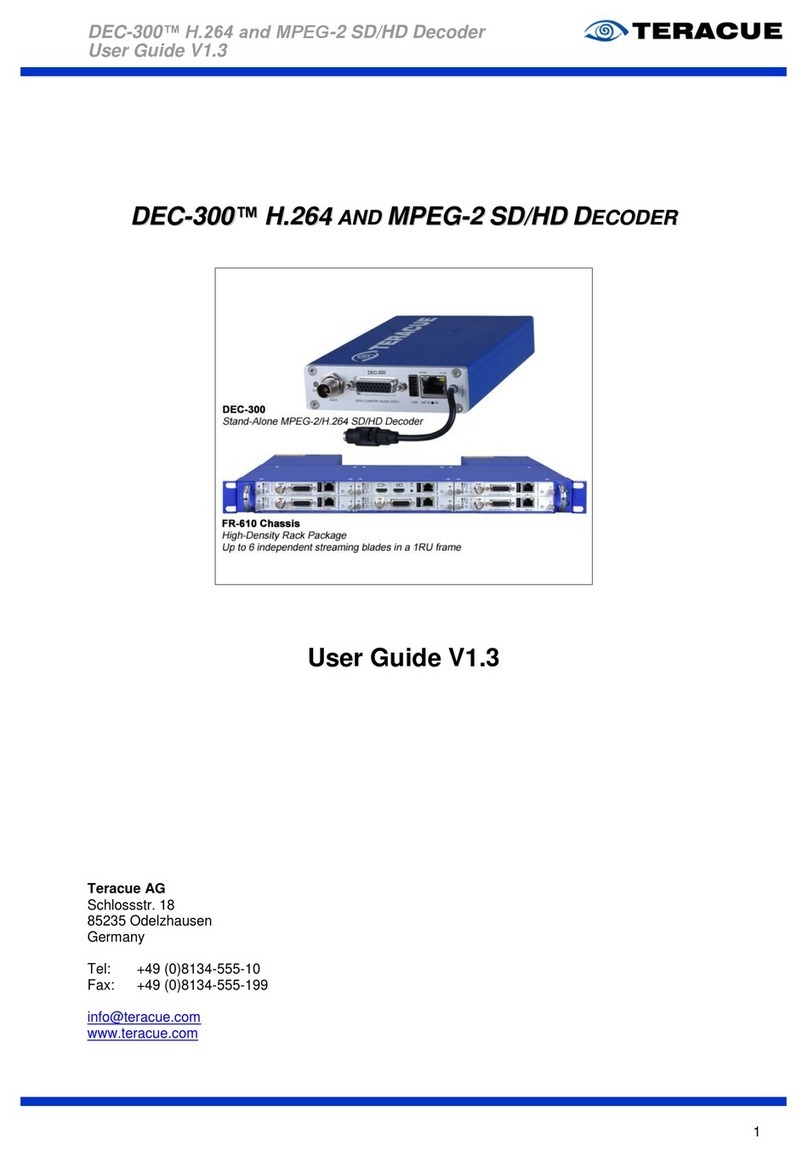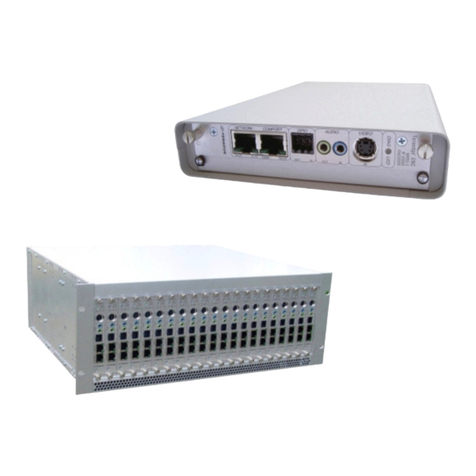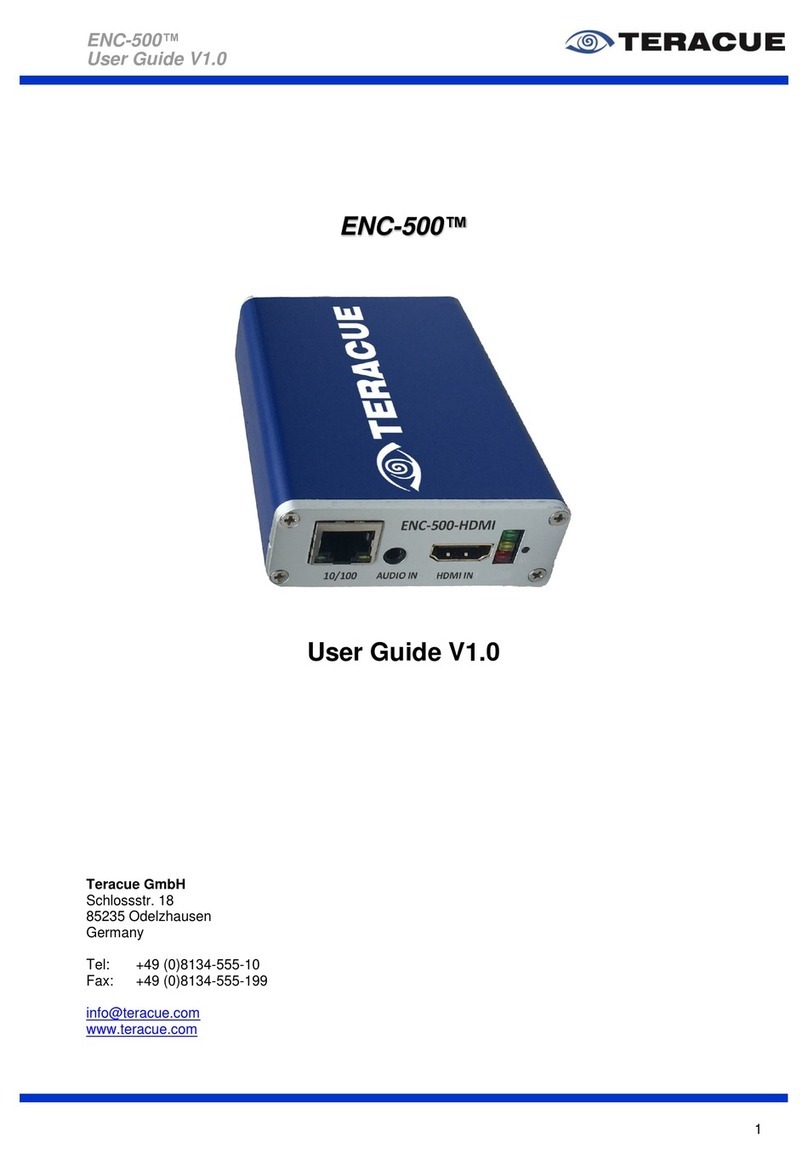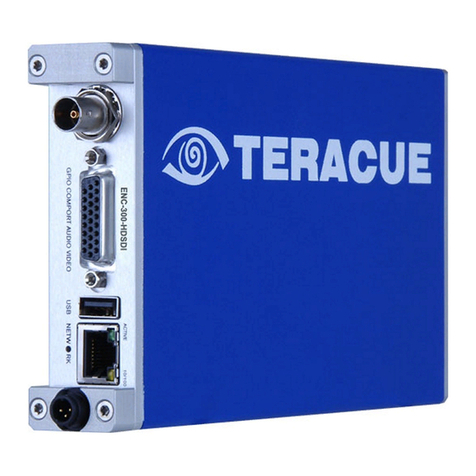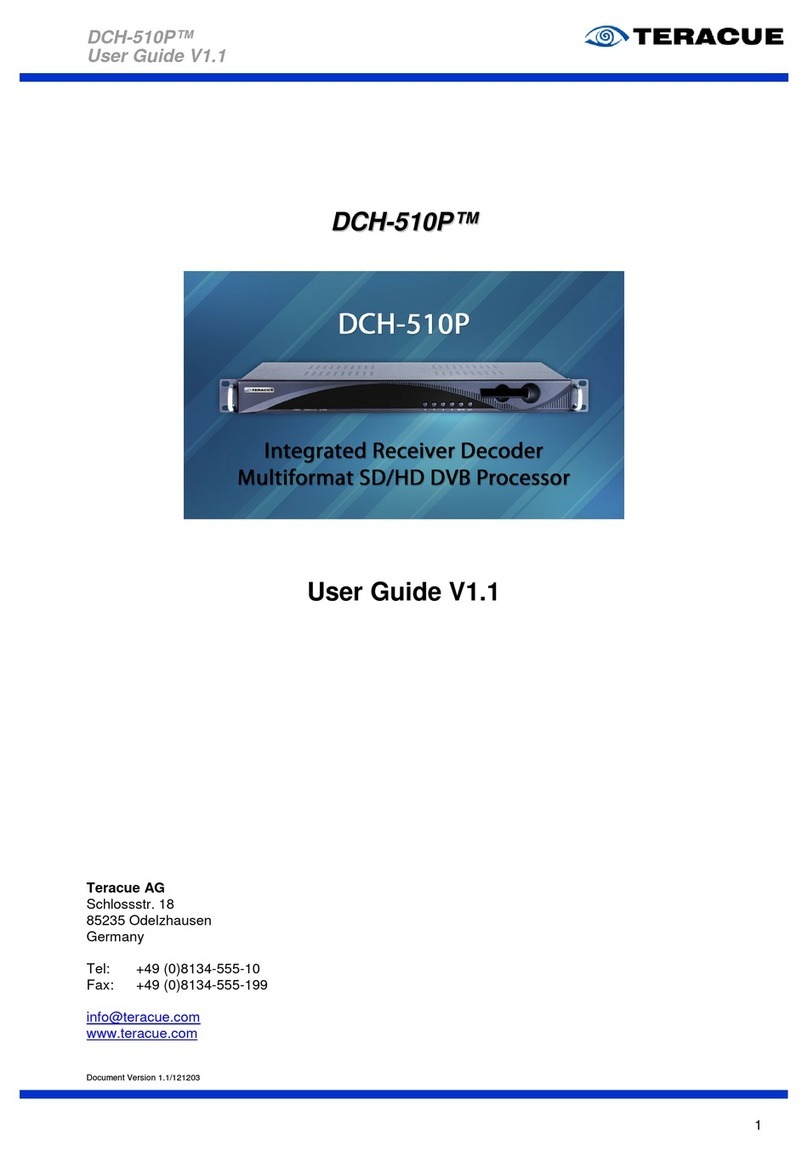
DEC-300™ H.264 and MPEG-2 SD/HD Decoder
User Guide V1.6
II. Content
1. OVERVIEW...................................................................................................................................... 6
2. GENERAL INFORMATION ............................................................................................................. 7
2.1 UNPACKING THE DECODER......................................................................................................... 7
2.1.1 DEC-300™ blade-based units............................................................................................. 7
2.1.2 DEC-300™ chassis-based devices..................................................................................... 7
2.2 SETTING UP THE DECODER AND SAFETY INSTRUCTIONS .............................................................. 8
2.3 CONNECTING THE DECODER (CHASSIS-BASED) ........................................................................... 9
2.4 ASSIGNMENT OF THE SUB-D 26-PIN CONNECTOR...................................................................... 10
2.5 BREAKOUT CABLE ‘S’............................................................................................................... 11
2.6 BREAKOUT CABLE ‘P’............................................................................................................... 12
3. DEC-300™ USER GUIDE ............................................................................................................. 13
3.1 ACCESSING AND CONFIGURING DECODERS............................................................................... 13
3.2 LOGIN ..................................................................................................................................... 14
3.3 GRAPHICAL USER INTERFACE OF THE DEC-300™ .................................................................... 15
3.3.1 Navigational Menus........................................................................................................... 15
3.3.2 ‘APPLY’ and ‘SAVE’ Buttons ............................................................................................. 16
3.3.3 Blue Info-Box..................................................................................................................... 16
3.4 DECODER CONFIGURATION ...................................................................................................... 17
3.4.1 Menu: Decoder / Settings.................................................................................................. 17
3.4.2 Menu: Decoder / Transport................................................................................................ 18
3.4.3 Menu: Decoder / Video...................................................................................................... 19
3.4.4 Menu: Decoder / Audio...................................................................................................... 20
3.4.5 Menu: Decoder / Source.................................................................................................... 21
3.4.6 Menu: Decoder / GPIO...................................................................................................... 23
3.4.7 Menu: Decoder / XPlayer .................................................................................................. 25
3.4.8 Menu: Network / Settings .................................................................................................. 26
3.4.9 Menu: Comport / Settings.................................................................................................. 27
3.4.10 Menu: System / Settings................................................................................................ 28
3.4.11 Menu: System / Date/Time............................................................................................ 29
3.4.12 Menu: System / Update (Upgrading firmware version) ................................................. 30
3.4.13 Menu: System / Password............................................................................................. 31
3.4.14 Menu: System / Remote................................................................................................ 32
3.4.14.1 Install the DEC-300 Certificate in Firefox V 40.x...................................................... 33
3.4.14.2 Install the DEC-300 Certificate in Internet Explorer 11 ............................................ 34
3.5 HELP....................................................................................................................................... 37
3.6 LOGOUT .................................................................................................................................. 38
4. EXTENDED FUNCTION................................................................................................................ 39
4.1 REMOTE CONTROL .................................................................................................................. 39
4.2 AUDIO TALKBACK..................................................................................................................... 43
4.2.1 Talkback Session between DEC-300™ and ENC-300™.................................................. 43
4.2.2 Talkback Session between DEC-300™ and ENC-200™.................................................. 45
4.2.3 Talkback Session between DEC-300™ and ENC-100™.................................................. 46
4.3 TCP STREAMING..................................................................................................................... 48
4.3.1 TCP configuration: ENC-200™ is the Server .................................................................... 49
4.3.2 TCP configuration: ENC-300™ is the Server .................................................................... 50
4.3.3 TCP configuration: ENC-200™ is the Client ..................................................................... 51
4.3.4 TCP configuration: ENC-300™ is the Client ..................................................................... 52
4.4 RESETTING TO FACTORY DEFAULT ........................................................................................... 53
4.5 RESTARTING THE DEC-300™.................................................................................................. 54
5. TECHNICAL SPECIFICATION...................................................................................................... 55
5.1 USED PORTS........................................................................................................................... 57
6. KNOWN ISSUES ........................................................................................................................... 58
7. APPENDIX..................................................................................................................................... 59
7.1 LIST OF FIGURES...................................................................................................................... 59







